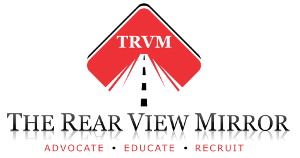Back in April I was invited to address the inaugural meeting of a new organization launched by Trucking HR Canada (THRC) called Supporting Women in Freight Transportation. While I support this initiative and can usually talk off-the-cuff about trucking issues until cows come home, I admit to struggling a bit over what I would say that day. You see, I come from the generation where idea of equality of all people, regardless of gender, race, or religion, began to become part of the public consciousness. Throughout my life, including both my academic and my business career, I have been surrounded by, worked with and for, many strong female role models. I found myself asking whether we need an organization for women in trucking. But, as I told the attendees at the meeting – and it was a big crowd — I have not, and I cannot, walk in their shoes. And, the numbers don’t lie. As far as things might have come, the struggle for equality for women continues in both business and politics.

In terms of the Canadian labour force, women continue to have lower participation rates than men. The participation rate for a particular group (in this case, women) is the total labour force in that group, expressed as a percentage of the total population in that group. Canada’s labour force participation rate for women ranks fourth in amongst the countries belonging to the Organization for Economic Cooperation and Development (OECD). That’s not bad, but it could be a lot better. Moreover, the majority of women employed in Canada continue to work in occupations where they have been traditionally concentrated. About 67% of all employed women work in teaching, nursing and related health occupations, clerical or other administrative positions, or sales and service occupations. In the “traditionally male” sectors, 30.1% of workers in manufacturing are women, as are 19.5% in primary industries. In transportation, trades, and construction work, women represent just 6.4% of workers.
We all know trucking continues to be a male dominated sector. At the same time, we need good people in all occupations, at all levels of our organizations. The trucking workforce is amongst, if not the oldest of all industries in the country. And, it is aging more rapidly than any other industry. Each year thousands of people are retiring from the sector that needs to be replaced. Why wouldn’t we look to fill more of those spots with women?
We know about the shortage of drivers. Women represent only 3% of the driving force and a significant untapped potential source of quality employees. But the same could be said of virtually every other category of worker in our industry as well as supervisors, managers and senior executives. Even at CTA and OTA, while there are more women directors on our boards than ever before, they are still very much in the minority.
Things are changing, though slowly. Perhaps the true measure of success would be for Supporting Women in Freight Transportation to not have to exist at all. But the reality is we are far from achieving that level of success. Consequently, I believe the organization is an important initiative and I commend Angela Splinter and THRC for launching it. Judging by the initial interest demonstrated by the turnout at its inaugural meeting, it appears that many of the women of our industry agree. The organization represents a fresh new voice not only for the women of trucking; but for the industry as a whole. I wish it, its recently inducted chairperson, Vicki Stafford of Cavalier Transportation and her team and fellow members, well.
About the Author
David H. Bradley
President & CEO
Canadian Trucking Alliance
Ontario Trucking Association
555 Dixon Road
Toronto, ON M9W 1H8
Tel: (416)249-7401 ext. 227; Fax: 1(866) 713-4188
email: david.bradley@ontruck.org
Internet: www.cantruck.ca; www.ontruck.org

